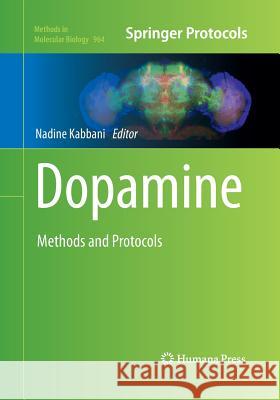Dopamine: Methods and Protocols » książka
topmenu
Dopamine: Methods and Protocols
ISBN-13: 9781493963331 / Angielski / Miękka / 2016 / 312 str.
This Methods in Molecular Biology (TM) book offers protocols for bioluminescence and fluorescence imaging, receptor immunoprecipitation and proteomic analysis, creation of a mouse model of Parkinson's disease, real time measurement of dopamine in the brain and more.











